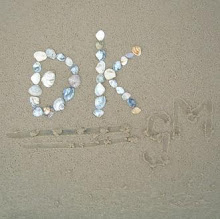(Continued from Part 01)
-->

(to be continued...)
Part 03
-->
From a wrist-band to a pint glass
As the main goal of IBE is “to sell something”, we needed to know what we were gonna sell first. It could be anything, which made it just so excited for me to imagine about the product. As creative as I had always was, I should come up with something so unique, so appealing that there never was before, and everyone would love to buy it, and buy it a lot. Now I think back about it, my creativity wasn’t big enough to keep up with my day-dreaming ability, as things weren’t going as I thought at all – again.
The first idea I got was to make T-shirts, but make them “combo”: there would be three different designs of the three parts of a mule, that when three people wearing them stand together the mule would appear. What do you think? My teammates didn’t think the idea was good, so it was given up.
As days passed by, the people were having ideas of typical products such as clock and flag; I came up with another “weird” idea: a wrist-band with a plastic ring connected to it, like this

This idea of mine shared the same fate with my previous one, and at this point I was truly sad. If innovative ideas were not gonna be considered, then we would sell normal products; and anyone could come up with that so I didn’t need to try imagining anymore. And so, there was no more new product idea came from me.
After some time they had a list of about 10 products, including clocks, flags, playing cards, pint glasses, stickers (wth?), T-shirts, (normal) wrist-bands, and some other things. We then tried to conduct a survey of customers’ opinion. Each person stood at a place on campus and asked people passing by which ones they would like to buy. It was the first time I actually did a survey so it was rather nice. I felt awkward with the first few people and then got used to it. However, I felt much more comfortable when I saw the people I already knew before. There was a huge and scary American dude with a scar on his forehead walking by when I came to him. When I was just starting, “Hello, I am from the IBE…” he said, “I am in a hurry,” then walked away. I felt like I was disturbing people like how those shampoo marketers used to disturb me back in Vietnam
The results of the survey led us to the top five choices: wrist-band, T-shirt, playing card, pint glasses, and flag. Since there were five teams in the company, each would do some research about one product and then we could compare among them. Our team’s product was… wrist-band. Since I couldn’t get my unique wrist-band approved, I at least tried to make the typical wrist-band somehow unusual. And so the new idea appeared: wrist-bands that are glow in the dark! Yes, glow-in-the-dark, baby. I could see in my head how awesome glowing wrist-bands were. I could wear them in any dance party, and my hands would shine along my break-dance moves (Step up 2, that’s right). How did my idea turn out? Nowhere, as you may guess. I already knew what my role in the company was not: I was not going to be a decisive factor. Any thought that I had by days and nights thinking would not be acknowledged. Then why try?
Eventually the final product was the frosted pint glass. I didn’t even know what a “pint glass” was, too much for the notion of being “frosted”. However, when some company officer showed the pictures of the product, it didn’t look bad at all! Maybe their ideas were just better than mine, sure.
So the next step was to design the glass, which was more clearly stated as: which UCM logos would we put on the glass. I soon forgot my question of “why UCM logos but not something else”, and joined them to see which ones were good. I would love to have something small at the front and something bigger at the back (come on, it’s not even a new idea I just created, it’s a basic for many things!). I could care less for the small part, and I wanted the picture of the tower at the back. The Friendship Tower
The thing is my life had been worse than that, so I wasn’t totally disappointed. Somehow I managed to learn to love the glasses, and found for myself some confidence of selling them. As I understood myself a bit more, I wouldn’t hold such a dream like “being the best seller in IBE history”. I would simply do my best to sell as many as I should. Until then, I would at least achieve something and show it off with my girlfriend.
(to be continued...)
Part 03

Comments
Post a Comment